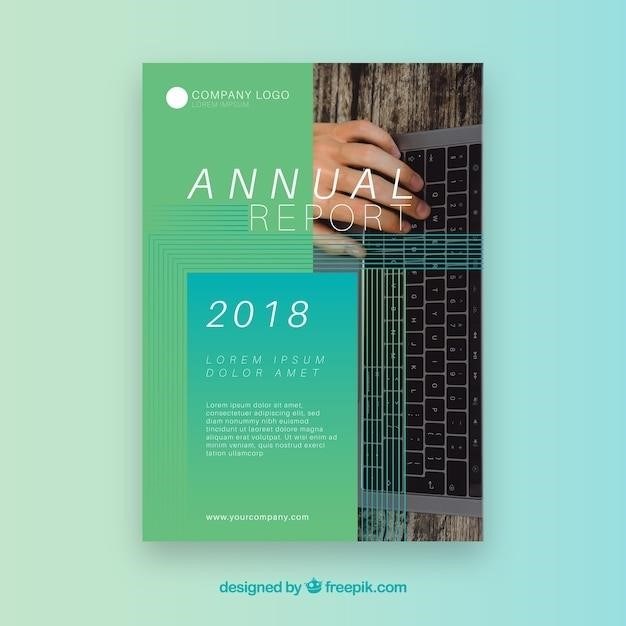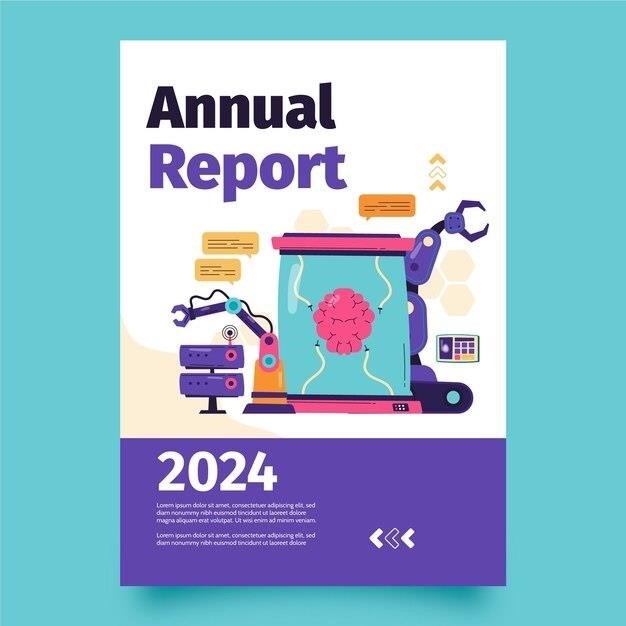MDS 3.0 RAI Manual 2023⁚ Key Updates
The 2023 MDS 3.0 RAI Manual, effective October 1st, 2023, includes significant revisions. Updates address clarifications, grammatical corrections, and substantial content changes exceeding 400 pages. New items like N0415K (anticonvulsant medication) and O0350 (COVID-19 vaccination) are incorporated. The manual, replacement pages, and change tables are readily available online.
Effective Dates and Versions
The MDS 3.0 RAI Manual undergoes regular updates to reflect evolving healthcare practices and regulatory changes. The version 1.18.11 of the manual became effective on October 1, 2023, introducing numerous revisions and additions. Subsequent updates have been released, with the most recent version available as of August 1, 2024, reflecting further refinements and corrections. It is crucial for long-term care facilities to utilize the most current version to ensure compliance with all applicable regulations and best practices. Access to the updated manual, including replacement pages and comprehensive change tables, is readily available through the official CMS website. The effective dates for each version are clearly indicated within the manual itself and on the CMS website to assist users in determining which version applies to their specific assessment period. Staying abreast of these updates is essential for accurate assessment and reporting.
Significant Changes in the 2023 Manual
The 2023 MDS 3.0 RAI Manual update encompassed a substantial revision, exceeding 400 pages of modifications. These changes ranged from minor typographical and grammatical corrections to more substantial alterations in content and instructions. The updates aim to improve clarity, accuracy, and efficiency in the assessment process. Specific notable additions include new data items such as N0415K, addressing anticonvulsant medication usage, and O0350, focusing on resident COVID-19 vaccination status. These additions reflect the evolving needs of long-term care residents and the importance of tracking specific health interventions. Furthermore, the reorganization of certain sections and the clarification of existing instructions aim to enhance the overall user experience and minimize potential ambiguities. The comprehensive nature of these changes underscores the ongoing commitment to improving the quality and accuracy of resident assessments.
Comprehensive Assessment Process
The MDS 3.0 RAI manual guides a thorough resident assessment process crucial for long-term care planning. This process involves a multidisciplinary team, including nurses, social workers, and therapists, collaborating to gather comprehensive data on each resident’s physical, mental, and psychosocial status. The assessment utilizes various tools and methods, including direct observation, interviews, and record review, to ensure a holistic understanding of the individual’s needs and capabilities. This information is then used to develop a care plan tailored to the resident’s unique circumstances. The RAI process emphasizes a person-centered approach, prioritizing resident preferences and promoting their autonomy and independence to the greatest extent possible. Regular reassessments are conducted to monitor changes in the resident’s condition and ensure the care plan remains effective and appropriate. The updated manual provides detailed instructions and guidelines to ensure consistency and accuracy in the assessment process across all facilities.

Understanding the MDS RAI
The Minimum Data Set (MDS) and Resident Assessment Instrument (RAI) are integral to long-term care. They provide a standardized assessment process, ensuring consistent, high-quality care for Medicare and Medicaid residents. The RAI guides care planning, based on individual needs.
Purpose and Use of the RAI
The Resident Assessment Instrument (RAI) serves as a comprehensive assessment and care planning process, mandated for long-term care facilities participating in Medicare and Medicaid programs since 1990. Its primary purpose is to collect standardized data on residents’ health status, functional capabilities, and care needs. This data, compiled within the Minimum Data Set (MDS), forms the foundation for individualized care plans. The RAI process isn’t merely about data collection; it’s a dynamic tool facilitating ongoing assessment, reevaluation, and adjustment of care plans to meet evolving resident needs. This ensures residents receive the most appropriate and effective services, promoting their well-being and quality of life. The RAI helps facilities track resident progress, identify areas needing improvement, and demonstrate compliance with regulatory requirements. Furthermore, the data collected through the RAI contributes to broader research and policy development within the long-term care sector. By providing a structured framework for care planning and evaluation, the RAI ultimately aims to enhance the quality of care delivered to residents in long-term care settings. The RAI’s standardized approach allows for better comparison of outcomes across facilities, fostering continuous quality improvement.
Required OBRA Assessments within MDS
The Omnibus Budget Reconciliation Act (OBRA) of 1987 mandates specific assessments integrated into the Minimum Data Set (MDS) 3.0. These assessments are crucial for ensuring resident rights and quality of care in long-term care facilities. Key OBRA requirements within the MDS encompass comprehensive assessments of residents’ physical, mental, and psychosocial well-being. This includes evaluating their functional abilities, cognitive status, and overall health conditions. The MDS captures information about the resident’s medical history, medications, and any existing health problems. It also assesses the resident’s ability to perform activities of daily living (ADLs), such as eating, dressing, and toileting, and their need for assistance with these activities. Furthermore, the MDS assesses residents’ social and emotional well-being, identifying any signs of depression, anxiety, or other mental health concerns. These assessments help to develop individualized care plans that address each resident’s unique needs and preferences, ensuring they receive the appropriate level of care and support. Regular reassessments are critical to track progress, adjust care plans as needed, and ensure compliance with OBRA regulations. The data collected informs care planning, resource allocation, and regulatory compliance; Failure to conduct these assessments properly can lead to serious repercussions for the facility.
The Role of the RAI in Long-Term Care
The Resident Assessment Instrument (RAI), encompassing the Minimum Data Set (MDS) 3.0, serves as the cornerstone of care planning in long-term care facilities. It’s a comprehensive process, not merely a collection of data points, that drives individualized care. The RAI’s influence extends beyond documentation; it dictates the interdisciplinary care planning process. Through the RAI, interdisciplinary teams collaborate to assess resident needs, strengths, and preferences, resulting in tailored care plans. This collaborative process ensures that residents receive holistic care, encompassing medical, nursing, social, and rehabilitative services, all aligned with their individual needs. The RAI facilitates communication among healthcare professionals, ensuring consistent and coordinated care delivery. Data gathered through the MDS informs resource allocation, enabling facilities to effectively manage staffing and other resources. The RAI also plays a vital role in regulatory compliance, providing crucial data for quality assurance and performance monitoring. Furthermore, the RAI contributes to reimbursement processes, as the information gathered is used to determine the level of care required and the corresponding payment rates. The RAI’s cyclical nature, involving regular reassessments, ensures that care plans remain responsive to changes in the resident’s condition, guaranteeing ongoing quality of care and person-centered care planning.

Accessing the Updated Manual
The updated MDS 3.0 RAI manual, including associated documents and forms, is available online. Check for updates regularly; the webpage is updated whenever a new version or changes are released. Replacement pages and change tables are also provided.
Locating the Current Version Online
Finding the most up-to-date MDS 3.0 RAI Users Manual is crucial for accurate assessments and care planning. The Centers for Medicare & Medicaid Services (CMS) website is the primary source for the official manual and any associated updates. Look for a dedicated section on long-term care or resident assessment instruments. The manual is typically available as a downloadable PDF, allowing for easy access and printing. Navigation within the website may involve searching for keywords like “MDS 3.0,” “RAI Manual,” or “Resident Assessment Instrument.” Ensure you’re accessing the current version, as indicated by the version number and effective date. Pay close attention to any announcements or notifications regarding updates, as these often highlight significant changes or corrections. Regularly checking the CMS website will help you stay current with the latest version and ensure compliance.
Accessing Associated Documents and Forms
Beyond the core MDS 3.0 RAI manual itself, numerous supplementary documents and forms are essential for complete and accurate assessments. These resources often include detailed instructions, examples, and guidance on specific sections of the manual. Look for appendices containing additional information, such as coding conventions and definitions. Change tables documenting revisions between versions are also crucial; these highlight modifications, additions, and deletions since the previous iteration. Downloadable versions of the MDS forms themselves are necessary for data entry and submission. These forms are integral to the assessment process, allowing for structured collection of resident information. The CMS website should provide links to all these associated documents. Ensure that you are using the versions that correspond to the current manual version to maintain consistency and accuracy in your assessments.
Changes and Replacement Pages
The MDS 3.0 RAI manual undergoes periodic updates, necessitating the use of replacement pages to incorporate these changes effectively. These updates often address clarifications, corrections, and additions to existing sections. A comprehensive change table typically accompanies each update, detailing all modifications made since the previous version. This table serves as a valuable tool for identifying specific alterations and their locations within the manual. Staying current with these changes is paramount for accurate and compliant assessments. Replacement pages should be integrated into the manual promptly to ensure that all assessments are conducted using the most up-to-date information. Failure to use the current version, including replacement pages, may result in inaccuracies and inconsistencies within the data collected. Regularly checking for updates and downloading replacement pages directly from the official CMS website is highly recommended to ensure compliance.